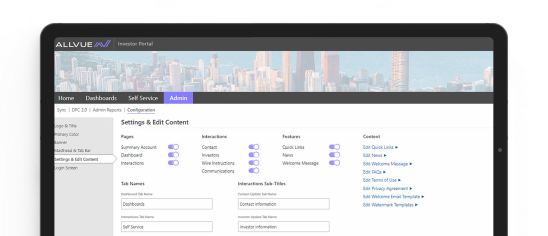
By: Michelle Wu
Head of Marketing
March 12, 2024
Choosing between private credit vs private equity investments can be tricky to navigate due to their high-risk, high-reward nature. While both investments can provide strong returns, private capital leaders must understand the nuances of how each option works to determine which would offer more benefit to their funds’ portfolio. And to lead in the alternative investments space requires fund managers to be well-informed about the ins and outs of private capital so they can mitigate risk when managing investor capital.
Below, we’ll provide an overview of private credit vs private equity, helping investors identify the most appropriate options to meet their investment needs.
Private credit explained
Private credit refers to the capital fund managers and other investors provide to companies as private, non-bank loans. Like publicly available loans, private credit generates returns in the form of interest for these investors.
Following the 2008 Global Financial Crisis, private credit options became more common because traditional lending institutions like banks and credit unions made financing terms more stringent, reducing access to high-risk loans.
The aftermath was the emergence and growth of alternative lending options, such as private credit, which later became a popular asset class and attracted ready investors.
How do private credit investments work?
Since private credit financing is available for borrowers who typically cannot access traditional bank loans, their lending standards account for the risk of late or defaulted payments. These loans also have higher interest rates, making them a high-risk, high-reward asset class for investors interested in diversifying their portfolios.
Private credit fund managers typically grow these assets by identifying investors such as pensions, university endowments, or high-net-worth individuals, who tend to have significantly more capital to invest over a longer time frame without worrying about short-term risk.
Investing in private credit also means an investor is not necessarily purchasing ownership of a given asset but is simply offering capital via loans. Should a borrower default on a private credit loan or file for bankruptcy, the investor is entitled to repayment. Interest rates with private credit assets can remain fixed or may vary depending on market conditions or the current borrower demand for capital.
Private equity unveiled
On the other hand, private equity provides capital to companies in need of financing while giving investors an ownership stake in the asset or company. Investors may invest in a private company or one listed on the stock exchange. When investing in publicly listed companies, private equity investors will often delist these companies to make them private.
In most instances, a private equity investor doesn’t only offer financial capital but may strategically invest expertise to improve the company or asset’s value before exiting by selling off the company when assets are more valuable or offering it up for an initial public offering (IPO). Another subset of private equity is venture capital, which helps fund earlier-stage companies like startups and can be a potential high-return investment.
How do private equity investments work?
Investment capital to fund private equity investments comes from limited partners (LPs), who offer funds with the hope of making gains when assets or the company is sold later on. Private equity investors may include endowments and foundations, pension funds, or other institutions with capital available for long-term investing without worrying about short-term risk.
One of the main benefits of private equity investing is that it’s not subject to market volatility like other publicly available investments. However, there’s still significant risk because the private equity firm investing in a given company or asset must conduct sufficient due diligence to mitigate as many risks as possible beforehand.
Comparative analysis
So, what are the key differences between private credit vs private equity?
#1 Risk categorization
From a private capital structure standpoint, equity is much lower than debt, meaning there’s a much lower overall risk of investing in private credit vs private equity. So, if a company declares bankruptcy, it must pay out debts before equity, which locks up any equity-based capital investors may have invested in this company.
However, risk can also vary depending on the asset class and investment type. A private equity firm with a strong track record of identifying promising investments in relatively low-risk sectors of the economy may have a lower risk profile than private equity debt offered to high-risk borrowers.
#2 Length of investment term
With private equity investments, an investor’s capital is likely to be tied up in an asset or company for an extended period because of the uncertainty surrounding the growth of that asset or company. On one hand, a private equity investor may realize losses by backing out of an investment too early. However, holding an asset for longer might yield significant gains if the asset or company performs well.
Private credit investments are typically short- or long-term, depending on the investor’s risk appetite or interests. Commitments tend to be more flexible than private equity investments, making it easier for investors to withdraw their money in the short term rather than holding their capital in a debt instrument.
#3 Value creation
Unlike private credit investing which is limited to capital injection, private equity investors can add value to the assets or companies they invest in, providing room for significant returns upon pulling out the invested capital.
Private equity firms with expertise in scaling companies can then optimize how much value they want to create when investing in assets, increasing the potential margin of the returns they can offer investors.
Performance comparison
Comparing the performance of private credit vs private equity investments comes down to the specific asset types or classes in which one invests.
From a longer-term buy-and-hold standpoint, private equity funds may perform better than private credit ones. Since a firm multiplies the value of acquired assets or companies over time, there is a higher likelihood of generating more returns than the capital initially invested at the time of selling.
However, short-term gain is more likely with private credit investments because investors can pull their capital out upon making their desired gains from interest. With diverse debt assets to invest in, these investors can also hop from one investment to another without the concern of holding on to an asset to build equity.
Regulatory and compliance factors
Although private credit has grown significantly since the 2008 financial crisis, it’s still under-regulated, meaning these credit options are subject to losses if the companies taking out these loan options file for bankruptcy.
Ideally, financial regulation mitigates the risks of borrowers with risky profiles taking on more debt than they should. Since private credit is regulated to a lesser degree than other debt asset classes, firms that don’t conduct adequate due diligence before providing companies with these loans may contribute to risks like employee layoffs if a company underperforms after taking out significant debt.
However, private equity is regulated by the Securities and Exchange Commission’s implementation of the Dodd-Frank Wall Street Reform and Consumer Protection Act, which protects private fund investors by increasing transparency and integrity regarding fund fees, expenses, and performance.
Allvue Systems’ Perspective
Identifying profitable asset types or classes and managing these alternative investments is complex, even for experienced fund managers. With more information to drive these decisions, private credit and private equity fund managers, administrators, and private capital leaders can streamline internal systems for evaluating investments.
Allvue provides various purpose-built technological solutions to reduce these complexities and help investment leaders make decisions faster and more effectively.
Factors to consider when choosing private credit vs private equity
Deciding between the two investment types comes down to multiple factors, whose importance will vary from one investor to another.
Risk-averse investors are more likely to benefit from private equity holdings because they can lower the risk margin by investing in promising companies and growing them before exiting via a sellout or IPO. On the other hand, investors with a high tolerance for risk may be better off investing in private credit. Regardless, both types of investments carry an intrinsic risk, leaving the decision to the investor’s risk aversion.
Investors looking to invest large amounts of capital for long-term gain, such as university endowments, family offices, or pension funds, have more flexibility to buy investments and hold them for extended periods. However, investors interested in short-term gains can inject capital into private credit options, enabling them to pull out the capital at any time.
For a stronger decision-making process—partner with Allvue
If you’re a leader in the alternative investments space and wondering how to choose between private credit vs private equity assets, it all comes down to information. With so much data to analyze day-to-day, you need an automated system to help make the best possible decisions that will drive long-term growth.
At Allvue, we provide our customers with robust, flexible investment solutions like private equity software and private debt software that help private credit and private equity fund managers scale growth and navigate the various complexities associated with managing investments. With our solutions, private capital leaders can leverage high-quality investment intelligence to inform decisions, monitor transactions, and stay ahead of the competition.
Schedule a demo today to learn more about our solutions.
Sources:
American Investment Council. Private Equity FAQs. https://www.investmentcouncil.org/private-equity-faqs/#:~:text=The%20private%20equity%20industry%20in,Reform%20and%20Consumer%20Protection%20Act
Barron’s. Potential Risks in the Growth of Private Debt Funds. https://www.barrons.com/articles/potential-risks-in-the-growth-of-private-debt-funds-2b589481
Investopedia. Private Credit vs. Private Equity: Understanding the Differences. https://www.investopedia.com/private-credit-vs-private-equity-7565530
More About The Author

Michelle Wu
Head of Marketing
Michelle is a dynamic marketing leader with 15+ years of experience in capital markets, fintech, and cybersecurity technology industries. Prior to joining Allvue, Michelle was the Vice President of Product Marketing at SecurityScorecard, a global leader in cybersecurity ratings, and was the Head of Security & Compliance Marketing at Box. Before moving into cybersecurity, she led the Banking & Securities GTM strategy at Intralinks and covered capital markets clients at HSBC. She holds an MSc in Media & Communications from the London School of Economics and a BS in Marketing & Finance from NYU Stern School of Business.


